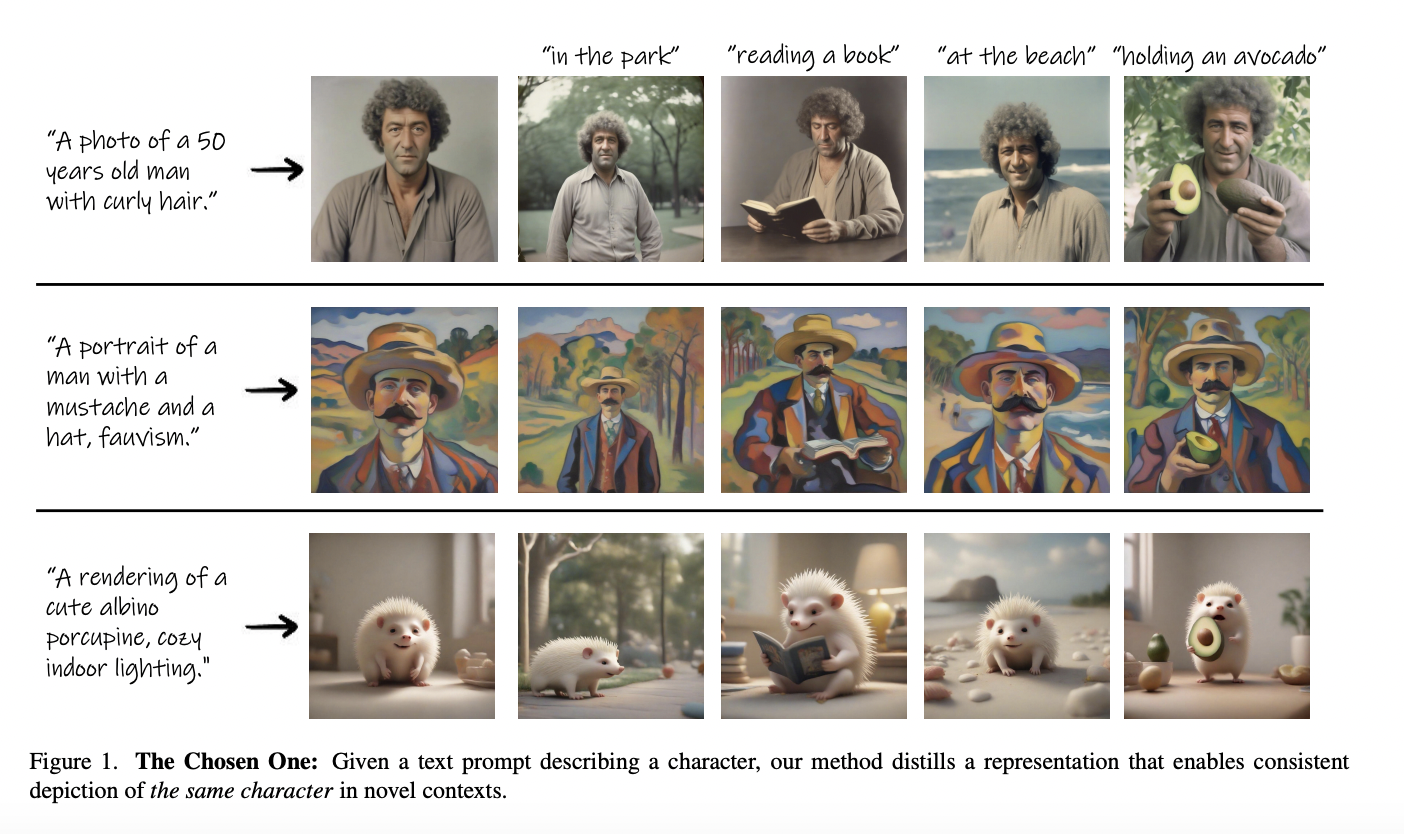The consistency of visual content creation, as demonstrated in Figure 1, plays a vital role in various creative endeavors such as crafting comics, delivering seminars, designing websites, establishing brand identities, illustrating books, and more. This uniformity is crucial for enhancing brand recognition, facilitating storytelling, fostering engagement, and nurturing personal connections. This analysis delves into the challenges faced by text-to-image conceptual models in maintaining consistent image generation despite their impressive capabilities.
The discussion primarily revolves around the complexities of creating consistent characters, where the focus lies on developing a framework that enables the generation of consistent depictions of the same character under diverse conditions triggered by a textual input prompt. Although the discourse predominantly centers on character depiction, the implications extend to broader visual concepts. For instance, envision an artist sculpting a cat figurine from clay. As illustrated in Figure 2, employing a prompt that specifies the desired character within a text-to-image model yields a varied spectrum of results. Conversely, our research elucidates a method to streamline the creation of a reliable representation of the kitten depicted in the second row, which can then be utilized to portray the same character across different scenarios.
The necessity for consistent character creation and the widespread utilization of text-to-image conceptual models have spurred the development of various ad-hoc solutions. These range from employing visual variations and manually categorizing them based on similarities to utilizing famous personalities’ identities as cues for generating consistent characters. In contrast to these makeshift, labor-intensive approaches, they propose a fully automated, systematic approach for creating dependable characters. The academic literature closely aligned with their work pertains to discussions on personalization and narrative evolution. Some methodologies leverage a vast dataset of user-provided images to construct an authentic representation of an individual character. Conversely, others struggle to generalize to new characters beyond the training set or rely on the reinterpretation of existing human character portrayals.
The collaborative research by experts from Tel Aviv University, Google Research, The Hebrew University of Jerusalem, and Reichman University underscores that in many applications, maintaining a consistent visual identity holds more significance than mere visual simulation. They introduce a novel framework where the primary objective is to swiftly derive an accurate depiction of a persona solely based on a textual description. By eschewing the necessity for target character images as input, their methodology enables the creation of a unique, consistent character without mirroring any existing visual representation. Their entirely automated approach to the challenge of crafting consistent characters hinges on the premise that a sufficiently large image dataset may contain clusters of images sharing common traits.
By identifying a cluster that encapsulates the “shared essence” among its images, an image can be extracted. Iteratively refining this process enhances the persistence of output images while adhering to the original input prompt. The initial step involves leveraging a pre-trained feature extractor to create a gallery of images based on the provided textual prompt. These images are then embedded in a geometric space, clustered, and the most cohesive selection is chosen as input for a customization technique aimed at preserving consistency. The resultant design is utilized to generate a subsequent gallery of images that not only reflect the input prompt but also exhibit enhanced consistency.
This iterative methodology continues until convergence is achieved. They conduct user studies and evaluate their technique against various benchmarks objectively and subjectively. Finally, they propose multiple avenues for implementation, encapsulating their endeavors as follows:
- Elucidating the process of consistent character development.
- Introducing a unique perspective on this endeavor.
- Validating the efficacy of their approach through user studies and comprehensive analyses.





